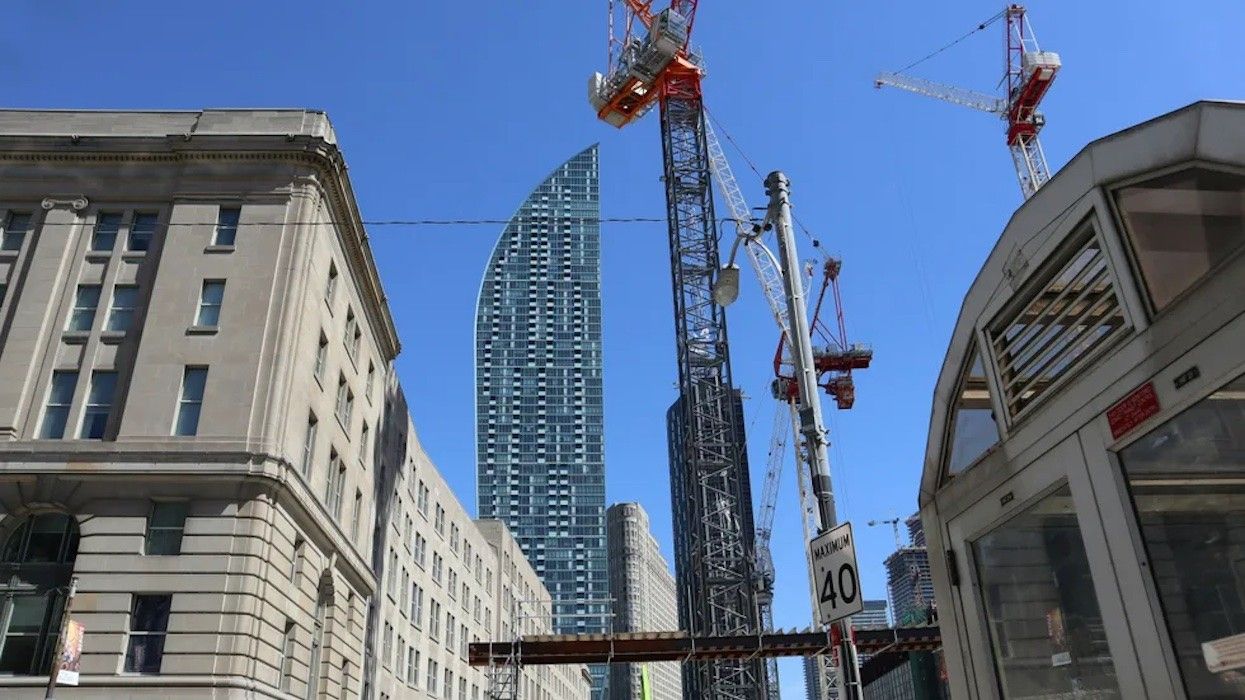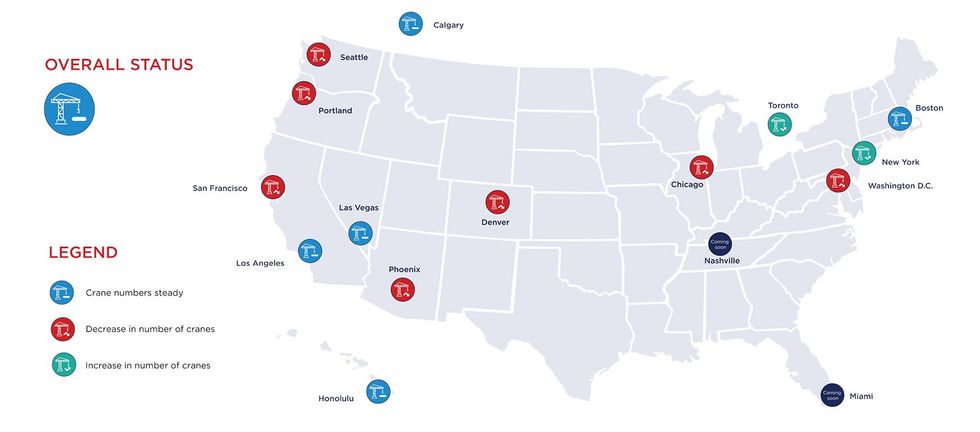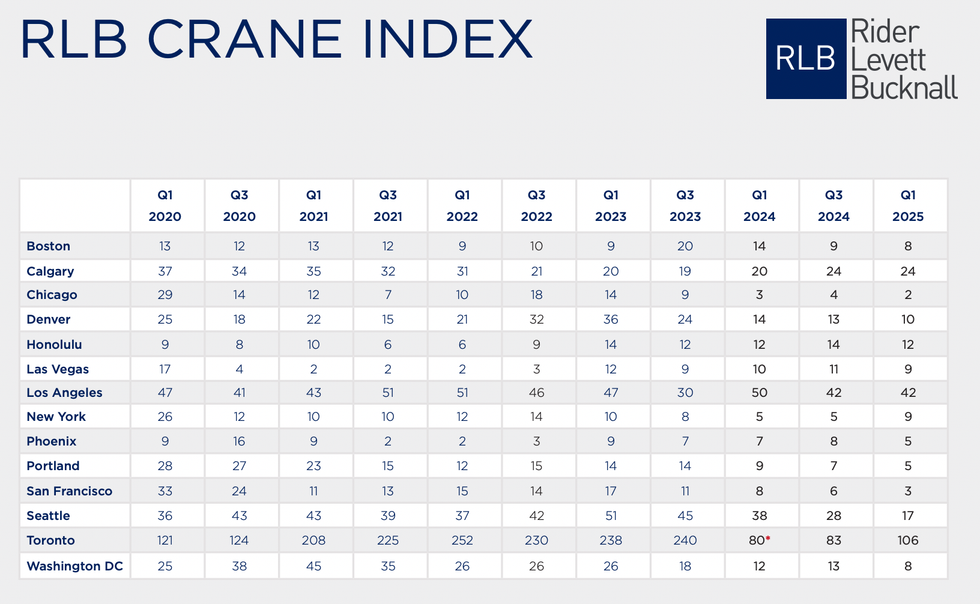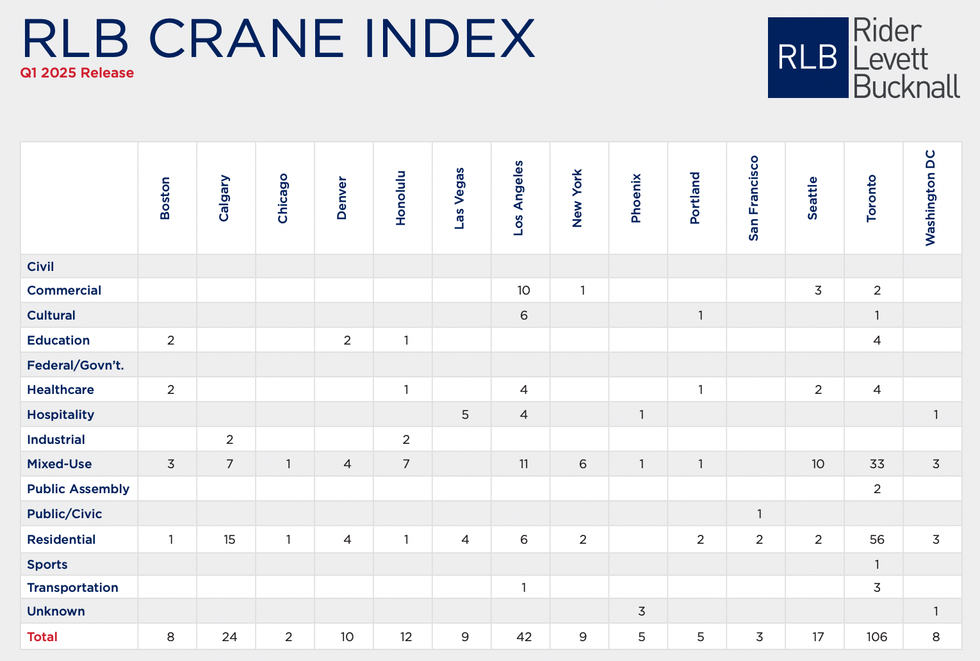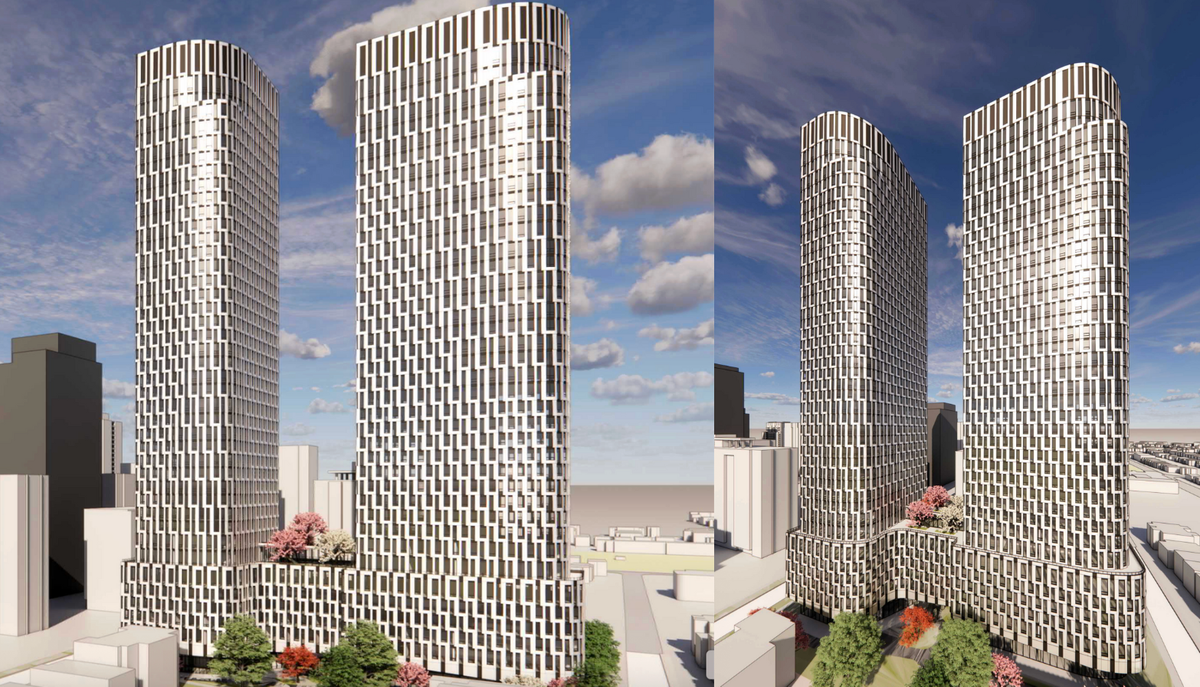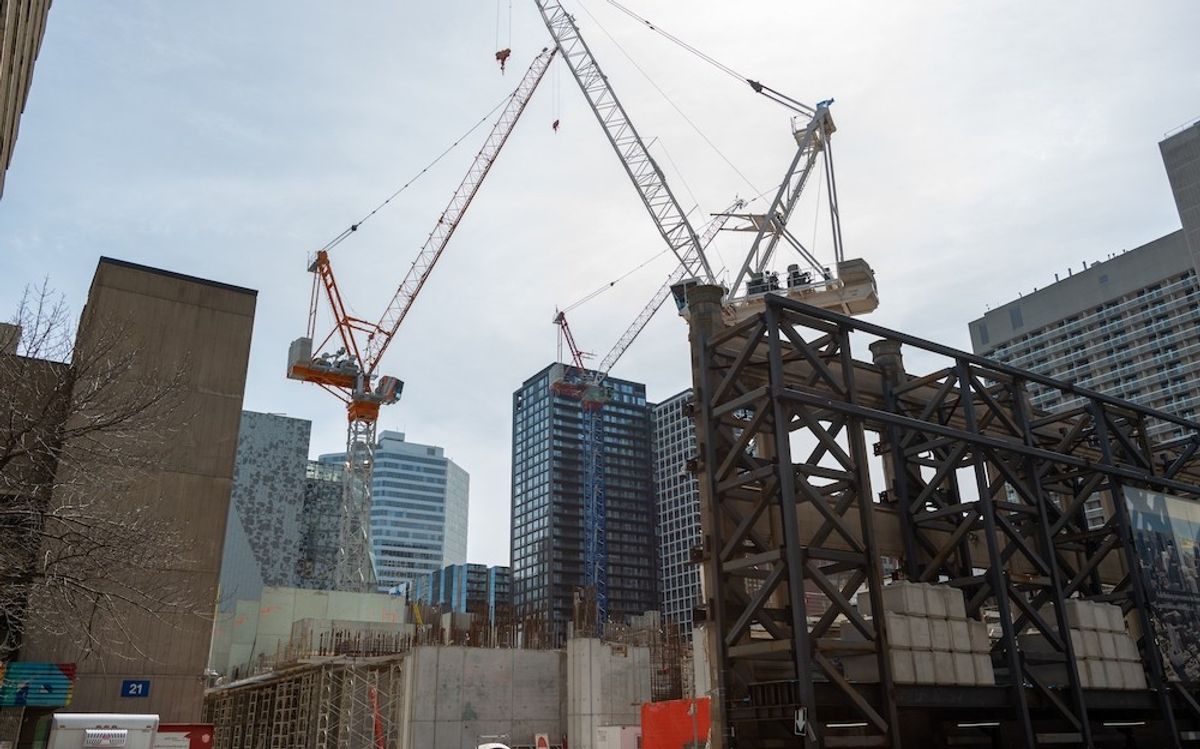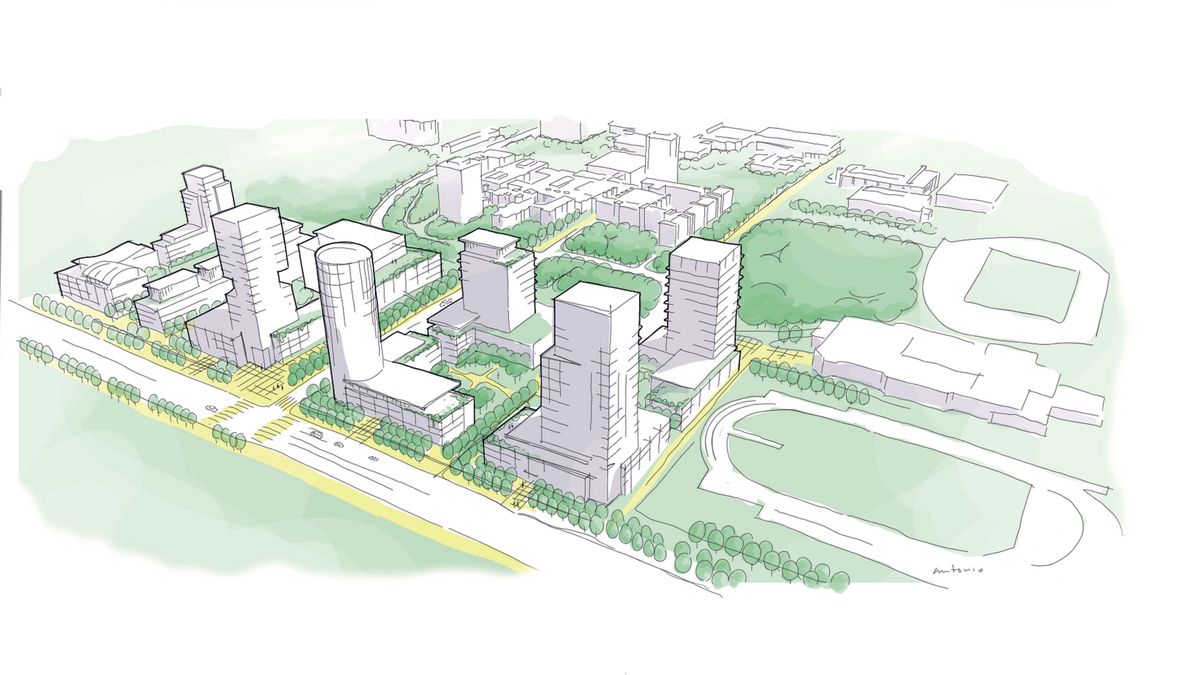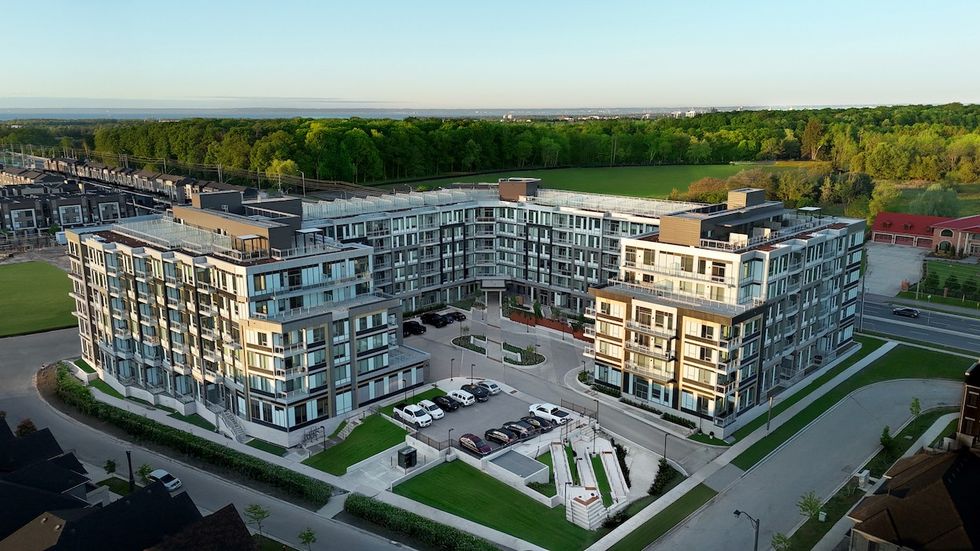Despite worries about lagging housing development in Ontario, Toronto's crane count remains miles ahead of any other North American city, shows the latest Crane Index report from Rider Levett Bucknall's (RLB). The quarterly report measures the current state of the construction industry’s workload by tallying the active crane count in 14 large cities across Canada and the US, and in the first quarter of 2025, Toronto outstripped its closest competition by 64 cranes.
In total, Toronto had 106 active cranes, followed by 42 in Los Angeles, 24 in Calgary, and 17 in Seattle. This landslide comes even after RLB reduced Toronto's survey area to only the downtown core in Q1 2024. Now, just cranes located within 3.5 kilometres of the Bloor Street West and Avenue Road centre are included.
The City's crane count rose from 83 to 106 between August 2024 and February 2025, representing a 20% increase, and according to the report, "signalling a strengthening construction market." This was after a lesser increase from 80 to 83 cranes between Q2 and Q3 of last year.
But in general, Toronto has been seeing a consistent increase in crane numbers going back to Q1 2021 (before RLB reduced its survey parameters), when there were 208 cranes in the city. Since then, numbers have continued to rise between nearly every quarter, and with the City approving its largest capital budget ever this year ($59.6 billion), $10 billion of which is being allocated for home construction, this trend is expected to continue.
Driving the high crane count are residential developments at 56 cranes, followed by mixed-use developments at 33. The remaining 17 cranes are spread across a number of healthcare, education, transportation, commercial, cultural, sports, and public assembly projects.
Over in Calgary, the crane count remained unchanged from last quarter, but the report notes that residential building permits increased 12% in 2024, pointing to their housing market trending toward balance by 2025. Here, residential reigns supreme as well with 15 cranes, followed by seven cranes for mixed-use projects and two for industrial projects.
Looking ahead, Calgary's crane count could be on the rise as well, since its economy is projected to grow by 2.8% in 2025, outpacing the national average of 1.5%, driven by the Trans Mountain pipeline expansion and continued strength in warehousing, transportation, and distribution, explains the report.
